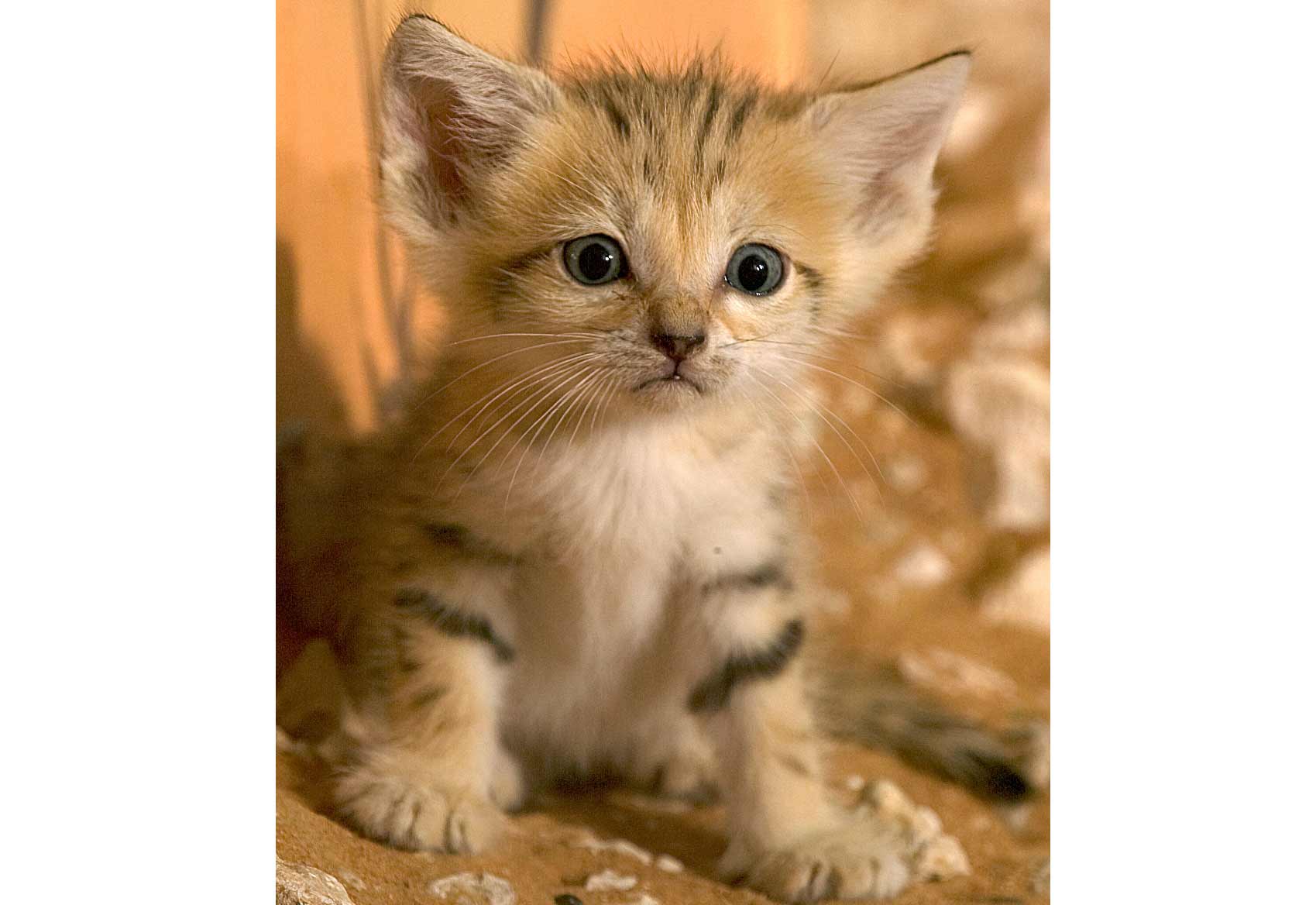 The Sand cat, native to the UAE, Middle East, and parts of North Africa, is listed as 'near threatened'.
The Sand cat, native to the UAE, Middle East, and parts of North Africa, is listed as 'near threatened'.
A sand cat kitten, born as a result of the first-ever successful species-specific in-vitro fertilization (IVF) and embryo transfer procedure, is now on exhibit with her mother at the Al Ain Wildlife Park & Resort (AWPR).
The Sand cat, native to the UAE, Middle East, and parts of North Africa, is listed as ‘near threatened’ by the International Union for Conservation of Nature. Its wild population is declining as a result of habitat destruction and declining prey base.
The kitten was born as part of an ongoing conservation partnership between AWPR and US-based University of Illinois and the Cincinnati Zoo and Botanical Garden. AWPR’s conservation program focuses on the protection and restoration of arid land biodiversity, with a special focus on carnivores.

| Advertisement |
Four Sand cat mothers at AWPR received IVF embryos during the first phase of a program called Project Sand Cat. On 13 December 2009 one of the mothers gave birth to a pair of Sand cat kittens marking an historic day in the protection of this species.
“Of the four Sand Cat mothers in Project Sand Cat, this mother successfully carried a litter to term. We were saddened to see one kitten die, but this unique queen-kitten Sand cat pair is a testament to AWPR’s conservation research and we are proud to introduce them to the public.” said Farshid Merhdadfar, animal collection manger at AWPR.
In the second phase of Project Sand Cat, recently completed at California’s Living Desert Zoo, embryos from AWPR’s Sand cats were transferred to two females. But neither gave birth to kittens, “We think the Sand cats were a little too old and we were a little worried about their fertility,” said Dr. Bill Swanson, director of Animal Research at the Cincinnati Zoo. “We still have half of the frozen embryos and we hope to duplicate AWPR’s recent successes.”
“As we see from the trials in the United States and our own experience here at AWPR, exhibiting this one-of-a-kind Sand cat pair is very exciting, said Dr. Mike Maunder, Chief Conservation, Collection, and Education Officer, at AWPR. “This research demonstrates that assistive reproductive techniques are viable tools for the conservation of arid land carnivores. We have more work to do in this area, but this is a fine beginning.”
To learn more about what you can do to help protect the Sand cat and other species, visit the Al Ain Wildlife Park & Resort evenings from 4pm to 12 midnight and on Fridays from 10am to 12 midnight.









 Search our database of more than 2,700 industry companies
Search our database of more than 2,700 industry companies









